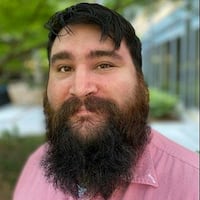According to the Atlanta-based Centers for Disease Control and Prevention, the agricultural industry is consistently at the highest risk for occupational injuries and fatalities in the country.
Farming is also one of only a few U.S. industries where family members, including children, are also considered at risk of injury.
The dangers are many, and many of them are deadly. More than half of people who get trapped in grain bins do not come out alive. Roadway crashes involving farm equipment are five times more likely to end in a fatality. In 2021 alone, 453 deaths were reported within the U.S. agricultural industry. That equates to 19.5 deaths per 100,000 workers.
That is why Emory School of Nursing assistant professor Erin Ferranti has been spearheading the university’s Farm Worker Family Health Program for the past five years. It’s a program producing big results in the realm of mobile health care.
“So this area of Georgia recruits and brings in the most H-2A agricultural workers in all of the state,” Ferranti told The Atlanta Journal-Constitution, as she discussed the program’s recent venture into Colquitt County. “Colquitt County, in particular, is the largest agricultural county in Georgia. So that is where the bulk of the farm workers are, especially during the early harvest season.”
In total, the Farm Worker Family Health Program is looking to help roughly 9,000 farmworkers and their families across four counties within a yearlong span. It’s a tall order, but Ferranti said she is up for the challenge.
“These guys are really hard workers,” she said. “They’re out in the field 12 to 16 hours a day. The biggest challenge is convincing them to come in and get screened and get health care.
“They’re here to make money,” she continued. “Their health is not always the top of their priority list, but they’re at risk for a lot of different things. So, we bring incentives. We fundraise, and we give Walmart gift cards, and we give hygiene gifts: socks and boots. We’ve given out different things to try and entice them to come in.”
When it comes to finding success with mobile health clinics, the challenges are plenty. Simply getting a mobile care unit to where it is most needed is not enough. To truly make a difference, mobile health clinic operators have to establish awareness and trust in equal measures. That’s why boots have proven to be a great way to bring in new patients.
“For many years, we were seeing patients with pesticide burns on their feet because they didn’t have the proper footwear,” Ferranti said. “And so they’d be standing in this pesticide-laden water that was in the fields. So, that’s how we try and bring them in. Once they come in, then they realize, ‘Oh, OK, yeah, maybe I should be checking my blood pressure a little bit more, and maybe I should be paying attention to heat illness.’”
Those interested in learning more about the Farmer Worker Family Health Program can do so here. Those interested in supporting the program can do so in a number of ways.
“There’s opportunity to volunteer, especially if you’re bilingual,” she said. “Most of our workers don’t speak English, so we rely heavily on medical interpreters for helping us do this work. There are always more resources that are needed. It’s sad that these are some of the hardest workers in our country — and we wouldn’t have food on our table if it weren’t for them — and yet, they still struggle with such high levels of poverty. And they struggle with access to care. So this program is essential for making that happen, connecting them with the health care system.”
About the Author
The Latest
Featured


